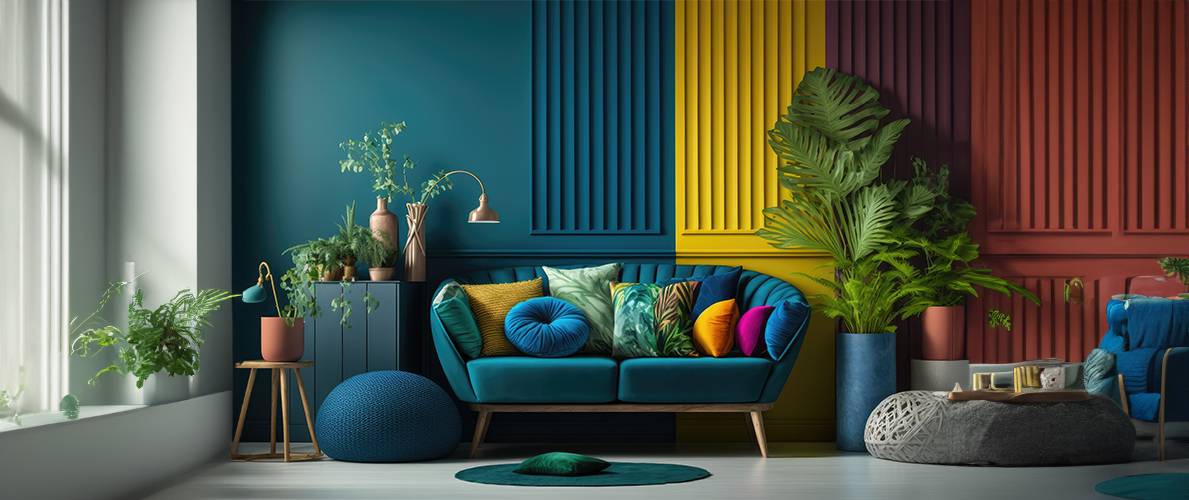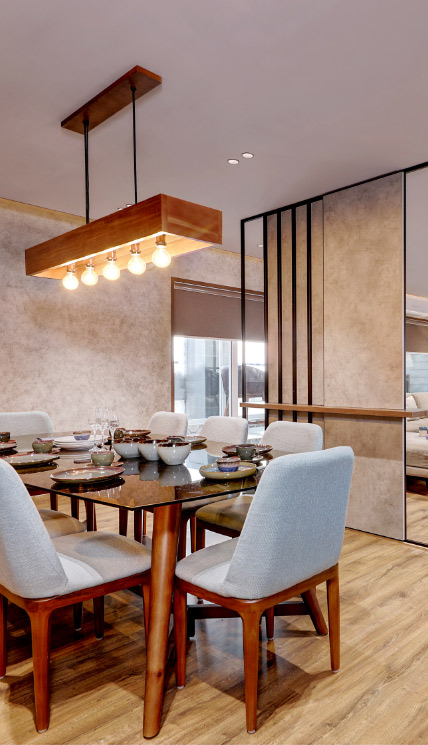Explore luxury interior design for an elegant touch.
Explore luxury interior design for an elegant touch.
Blog Article
Transform Your Home With Necessary Principles of Interior Design and Looks
The art of transforming your home through the vital principles of interior decoration and visual appeal calls for a thoughtful method that balances color, equilibrium, and spatial awareness. By comprehending the influence of color theory and the importance of structure and patterns, one can produce spaces that are not only visually enticing yet additionally deeply individual. Attaining this balance includes more than mere decoration; it encompasses a strategic setup and an eager understanding of exactly how each aspect communicates within a space. As we discover these fundamental ideas, consider exactly how they may redefine your understanding of home and personal expression.
Comprehending Color Concept
Color concept is an essential facet of interior decoration that dramatically influences state of mind, perception, and total aesthetic. Understanding the principles of shade theory enables designers to produce rooms that resonate psychologically with residents while meeting practical needs (interior design firms). Shades can be categorized into 3 primary types: main, additional, and tertiary. Each group plays an essential duty in developing harmony within a room.
The psychological effect of shades is extensive; cozy hues such as reds and oranges evoke energy and heat, while cool tones like blues and greens promote peace and harmony. The usage of corresponding shades boosts aesthetic interest, creating striking contrasts that can elevate a room's appeal.
Neutral colors, on the other hand, serve as a versatile backdrop, allowing other design elements to shine. It is necessary to consider elements such as lighting and the room's purpose when selecting a shade scheme, as these can modify the assumption of shades throughout the day.
Ultimately, a well-considered color design can change a room, cultivating a feeling of comfort and style that aligns with the inhabitants' choices. Proficiency of color theory is, therefore, a vital ability for any type of interior designer intending to produce harmonious and welcoming settings.
Accomplishing Balance in Layout
Just how can designers achieve a feeling of balance in their rooms? Accomplishing balance in layout is fundamental to creating unified insides. Designers can make use of 3 main kinds of equilibrium: in proportion, asymmetrical, and radial. Balanced balance entails setting up aspects evenly around a main point, cultivating a sense of order and tranquility. This kind commonly features sets of furniture or art work, enhancing aesthetic stability.
Asymmetrical equilibrium, on the various other hand, counts on differing elements that still accomplish a cohesive look. This strategy enables even more dynamic and casual setups, offering passion while preserving stability. By thoroughly picking varying sizes, colors, and appearances, designers can produce an aesthetically compelling space that really feels well balanced yet energetic.
Radial balance highlights a main centerpiece with aspects emitting outward. This style is frequently seen in round layouts, where furniture and decoration develop a cohesive surround that draws the eye internal.
Inevitably, achieving balance requires thoughtful consideration of range, percentage, and the relationships between elements. miami luxury interior design. By masterfully using these equilibrium concepts, developers can change rooms right into environments that feel both aesthetically pleasing and functionally harmonious, boosting the overall experience for residents
Relevance of Spatial Recognition

An eager feeling of spatial recognition permits designers to identify centerpieces within a room, directing the customer's interest to crucial attributes while keeping a total feeling of unity. It additionally assists in the critical positioning of lights, which can dramatically influence the perception of room and state of mind. In addition, recognizing spatial partnerships makes it possible for the developer to satisfy the certain requirements of residents, guaranteeing that each area serves its desired objective without endangering aesthetics.
Inevitably, spatial understanding is essential for making the most of the potential of any kind of indoor space. By carefully taking into consideration the interplay between measurements, layout, and feature, designers can develop atmospheres that not only fulfill functional needs yet also stimulate a sense of convenience and charm, enhancing the general living experience.
Integrating Texture and Patterns
Accepting a diverse series of textures and patterns can dramatically improve the aesthetic and tactile allure of an interior area. The strategic use various materials-- such as timber, metal, material, and rock-- produces deepness and interest, making an area feel extra inviting and vibrant. For circumstances, integrating smooth surface areas with harsh structures can develop a balance that draws the eye and involves the detects.
When integrating patterns, take into consideration both scale and repeating. Big patterns can offer as prime focus, while smaller, refined layouts can enhance other aspects without frustrating the room. Layering patterns, such as pairing flower cushions with striped throws, adds intricacy and a feeling of consistency if executed thoughtfully.
It is additionally crucial to keep a natural shade combination, making sure that structures and patterns collaborate instead than complete for focus. By choosing a few key textures and patterns, you can develop a linked visual that reflects your personal design while boosting the general ambiance of the room. Inevitably, the cautious consolidation of these elements can change an ordinary space right into an innovative internet atmosphere rich with personality and warmth.
Personalizing Your Room
Producing a space that mirrors your character is important to attaining an absolutely inviting setting. Customization in interior decoration allows you to instill your distinct style and passions into your home, changing it from a mere sanctuary into a sanctuary that speaks with who you are. Begin by picking a color scheme that resonates with your feelings-- bold colors can energize, while soft tones supply serenity.
Include artwork and style that reflect your interests, whether it be travel, nature, or abstract principles. Displaying personal collections, such as publications, photographs, or keepsakes, can evoke treasured memories and develop focal points within an area. Additionally, think about customizing practical items, like upholstered furniture, to line up with your visual choices.

Verdict
In conclusion, the change of a home via the essential principles of interior style and aesthetic appeal demands a detailed understanding of color theory, equilibrium, spatial understanding, go to these guys texture, and customization. Each aspect contributes dramatically to creating a harmonious and functional living atmosphere - luxury interior design. By thoughtfully integrating these principles, individuals can enhance the visual appeal and emotional resonance of their spaces, eventually promoting a home that shows special identifications while giving convenience and usefulness
Report this page